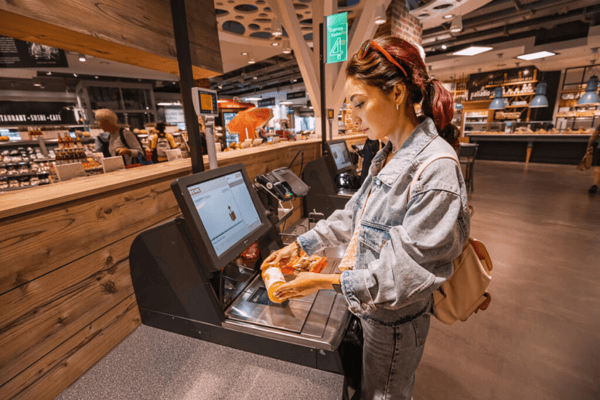
In the last two years, supermarket and hypermarket customers have been treated to a service that, although apparently new, has already been around for almost two decades in Portugal: self-checkout technology.
The first self-service checkout in Portugal
As we've mentioned, despite the recent massification of this type of checkout, we need to go back to 2005 to find the first self-service checkout installed in our country. This took place at Pão de Açúcar in the Amoreiras Shopping Centre and, according to sources at the time, was a huge success with the public.
In almost twenty years, a lot has changed, especially in the technology used in these pay and go tillsand the type of payments they allow.
Payments with self-checkout technology
Launched at a time when contactless payments were still far from representing a valid alternative to PIN or cash payments, the new self-checkout tills that we can find in any hypermarket near us are already equipped with the most innovative TPA (automatic payment terminal) on the market that allow us to pay for our purchases with a credit/debit card via contactless, digital wallets (Apple Pay, Google Pay, etc.), MB WAY and even by QR Code.
Having said that, two decades after the first self-service checkouts were installed in Portugal, what are the major pros and cons of self-checkout technology?
The answer follows below.
Pros and cons of self-checkout in Portugal
Self-Checkout - Pros
- Greater autonomy for the clientThe appearance of self-checkout tills contributes to greater customer autonomy when it comes to paying;
- Decrease in expenses and increase in salesA supermarket without traditional checkouts allows managers to better manage cashiers, allocate them to another activity and reduce human resource costs.
The installation of self-checkout tills also contributes to an increase in sales, as it allows for greater and faster utilisation.
- More convenienceBy offering customers technology that allows them to shop more smoothly and without queues, your business gains a competitive advantage over your competitors, especially at times of high volumes of purchases such as Christmas, Easter or sales.
- Fewer queuesThe self-checkout process, due to its practicality and simplicity, allows you to reduce customer waiting times and avoid long queues.
Self-Checkout - Cons
- Lack of interaction between employee and customerThe absence of staff at checkout can lead to stressful situations for some customers who are less familiar with technology.
In order to get round this, many retailers choose to allocate a member of staff to assist at self-service checkouts or to install a button so that the customer can immediately ask for help from a member of staff.
- Problems with loss prevention and less supervisionThe absence of an employee in the manual and visual control of purchases and scanning can lead to monetary losses for the retailer due to incorrect weighing, unregistered products, swapped barcodes or even non-payment.
- Software errorsAs with other technologies, self-service checkouts are subject to software errors that can render them unusable for a few moments.


